Minimalist Skincare Routine: Simplicity for Healthy, Glowing Skin
In a world filled with beauty products promising miracle results, it can be overwhelming to know what’s actually best for your skin. That’s where following a minimalist skincare routine can have a positive impact.
A minimalist skincare routine is all about simplifying your beauty regimen to focus on the essentials—those products that really make a difference. It’s an approach that lets you achieve healthy, glowing skin without breaking the bank or bombarding your face with unnecessary layers of products.
In this post, we’ll dive into the world of minimalist skincare, discuss its numerous benefits, and help you understand how to create your very own minimalist skincare routine.
By the end, you’ll not only have a glowing complexion but also have a streamlined, affordable skincare routine that works for you.
Table of Contents
What is a Minimalist Skincare Routine?
A minimalist skincare routine involves cutting out the excess and focusing on the few essential products that your skin truly needs.
The idea is simple: fewer products but more effectiveness. Instead of piling on layers of serums, oils, and creams, you select multi-functional products that address your core skin needs.
Benefits of a Minimalist Skincare Routine
Before we jump into how to create your own minimalist skincare routine, let’s first talk about the advantages of embracing this approach.
1. Simplifies Your Routine
When you cut out the unnecessary steps, your daily routine becomes faster and more enjoyable. You’ll no longer feel bogged down by complex rituals and complicated instructions.
2. More Time for Other Things
With fewer products to apply, you’ll save time in your morning and evening routine. This extra time can be spent on other self-care activities or just getting an extra few minutes of sleep.
3. Cost-Effective
By investing in fewer products, you’ll save money. You won’t have to constantly try new products or splurge on unnecessary luxury items. Quality over quantity is key in a minimalist approach.
4. Less Risk of Irritation
The fewer products you use, the less likely your skin will react negatively. A minimalist routine ensures you’re only using what your skin needs, lowering the chance of irritation.
5. Better for Your Skin
With fewer ingredients being absorbed into your skin, it becomes easier to pinpoint what works and what doesn’t. Over time, you’ll be able to refine your routine to get optimal results.
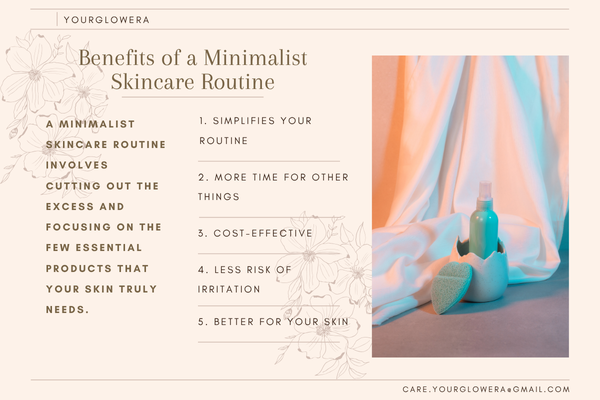
How to Create a Minimalist Skincare Routine
Putting together a minimalist skincare routine is simpler than it seems. All you need to do is follow these steps to ensure you’re using only what’s essential for your skin’s health.
1. Understand Your Skin Type
Before you begin, it’s important to identify your skin type. How would you describe your skin—oily, dry, normal, combination, or sensitive? Knowing your skin type will help you select the most suitable products.
2. Select a Cleanser Appropriate for Your Skin Type
Cleansing is an essential and fundamental part of every minimalist skincare routine. Opt for a gentle, hydrating cleanser that caters to your specific skin needs.
A gel-based or creamy cleanser is perfect for dry skin, while foaming or salicylic-based cleansers work best for oily skin.
3. Hydrate with a Moisturizer
No matter your skin type, moisturizing is essential. Choose a lightweight, non-comedogenic moisturizer if you have oily skin or a thicker, richer cream if you have dry skin.
4. Add Sunscreen to Protect Your Skin
A crucial step that cannot be skipped: sunscreen. Wearing sunscreen is important whether the weather is sunny or overcast.
Select a broad-spectrum sunscreen with at least SPF 30 to protect your skin from harmful UV radiation.
5. Optional: Target Specific Skin Concerns
If you have specific concerns like acne, pigmentation, or fine lines, consider adding a targeted treatment. However, avoid overloading your skincare routine. A well-chosen serum or treatment can be enough on its own.
Must-Have Products for a Minimalist Skincare Routine
Now that we’ve discussed how to create a minimalist skincare routine, let’s look at the must-have products to get you started:
1. Gentle Cleanser
A mild, non-drying cleanser that effectively removes dirt and impurities while maintaining your skin’s natural moisture balance.
2.Moisturizer
An essential part of any skincare routine, choose a moisturizer suited to your skin type that offers lasting hydration.
3.Sunscreen
Complete your minimalist skincare routine by applying sunscreen as the last step. It is the most effective anti-aging product and provides crucial protection from UV damage.
4.Serum (Optional)
For targeted concerns such as acne, dark spots, or extra hydration, incorporate a lightweight serum containing beneficial ingredients like hyaluronic acid or niacinamide for enhanced results.
How to Select the Best Budget-Friendly Products for Your Routine
A minimalist skincare routine doesn’t need to include expensive products. In fact, many budget-friendly brands offer high-quality essentials. Here are some tips on selecting the best products without overspending:
• Look for Multi-Use Products: A moisturizer with SPF or a cleanser that doubles as a makeup remover can save you both time and money.
• Invest in Simplicity: Choose straightforward products with short, clear ingredient lists. Stick to the basics.
• Read Reviews: Consumer feedback can offer valuable insights into how well a product works and whether it’s worth the investment.

How Often Should You Follow Your Minimalist Skincare Routine?
One of the best things about a minimalist routine is that it’s easy to keep up with. You can incorporate this routine into your day twice—once in the morning and again before bed.
If you feel your skin is getting irritated, consider reducing the number of times you use targeted products, like exfoliating serums.
Giving your skin a break can help it recover and prevent further irritation. Always listen to your skin’s signals and adjust your routine accordingly to maintain its health and balance.
Can a minimal skincare routine work effective for all skin types?
Absolutely! A minimalist routine is adaptable to all skin types, from oily to dry to sensitive. The secret is selecting the right products that address your skin’s unique requirements. For example, if you have dry skin, prioritize rich moisturizers and hydrating serums.
If you have oily skin, choose lightweight formulas that won’t clog your pores. Those with sensitive skin should opt for gentle, fragrance-free products that soothe inflammation.
Combination skin requires a balanced approach, using different products on different areas to address varying needs. It’s important to listen to your skin and adjust your routine accordingly.
Remember, simplicity doesn’t mean sacrificing effectiveness—aim for products that truly work for your individual skin type and concerns.
The Role of Consistency in a Minimalist Skincare Routine
Consistency is essential to achieve genuine results, even with a simple minimalist routine. Stick with your routine for at least a few weeks before making any changes, and be patient.
Skin takes time to adjust and show improvements, but a consistent routine will keep your complexion looking its best. Remember that skincare is a journey, not a quick fix—results build gradually over time.
Avoid the temptation to switch products frequently, as this can disrupt your skin’s balance. Paying attention to how your skin responds and making small, gradual adjustments will lead to healthier, more resilient skin in the long run.
Additionally, maintaining good lifestyle habits such as staying hydrated, eating a balanced diet, and getting enough sleep will complement your skincare efforts. Consistency in both your routine and overall habits is the key to lasting beauty.
Common Top Mistakes to Avoid in a Minimalist Skincare Routine
While simplifying your skincare routine is great, there are a few common mistakes that you should watch out for:
• Skipping Sunscreen: This is an absolute no-no. Sunscreen is a must, every day, without fail.
• Over-Exfoliating: Don’t make the mistake of using exfoliants too often. Use it once or twice a week to avoid irritating your skin.
• Choosing Products Based on Trend: Always prioritize your skin’s needs over what’s trending. Stick to the basics and avoid being swayed by flashy marketing.
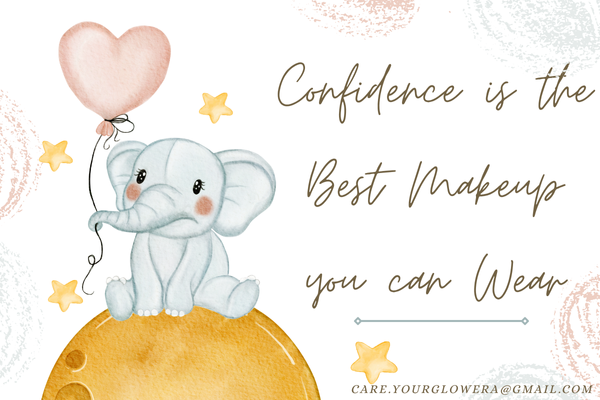
Final Thoughts
A minimalist skincare routine is a game-changer for those looking to simplify their beauty regimen, save money, and still enjoy healthy, glowing skin.
With a focus on the essentials—cleanser, moisturizer, sunscreen, and maybe a serum or two—you can achieve fantastic results without the overwhelming number of products often touted by the beauty industry.
In skincare, simplicity is often the best approach.
In a world filled with countless skincare products and complicated routines, embracing simplicity can be a game-changer. “Unlock the Secrets of a Minimalist Skincare Routine: Beauty in Simplicity“ reveals that achieving healthy, radiant skin doesn’t require an extensive collection of products.
By focusing on a few well-chosen essentials and adopting consistent habits, you can enhance your natural beauty while avoiding unnecessary clutter and expense. This minimalist approach emphasizes quality and effectiveness, allowing your skin to breathe and thrive without overwhelming it with too many ingredients.
If you’re curious about how to simplify your skincare regimen without sacrificing results, this guide is just what you need.
Discover how embracing the principles of beauty in simplicity can lead to clearer, more glowing skin. Whether you’re new to skincare or looking to declutter your routine, learning the secrets behind a minimalist approach can transform your skincare mindset.
Dive in to explore how less really can be more, revealing the true power of simplicity in achieving your skincare goals.
Frequently Asked Questions
1. How to identify skin type?
To identify your skin type, observe how your skin behaves after cleansing. If it feels tight or dry, you likely have dry skin. If it feels oily, you have oily skin. Combination skin has both oily and dry areas, while sensitive skin reacts easily to products.
2. Is minimalist skincare better?
Minimalist skincare can be better for those who want a simple, effective routine without overloading their skin with unnecessary products. It’s also cost-effective and time-saving, especially for busy individuals.
3. Which serum is best for glowing skin?
Serums with ingredients like Vitamin C, hyaluronic acid, or niacinamide are great for boosting glow in a minimalist skincare routine. They hydrate, brighten, and smooth the skin without needing a complicated regimen.
4. Do you put serum or moisturizer first?
In a minimalist skincare routine, apply serum first, followed by moisturizer. Serums are more concentrated, and moisturizing afterward locks in their benefits.
5. How do I become a minimalist?
To become a minimalist, start by decluttering your skincare routine and keeping only the essential products that serve your skin’s needs. Stick to a simple, effective routine and avoid buying unnecessary products.
6. What are the 10 steps of skincare routine?
The 10-step skincare routine includes cleansing, toning, essence, serum, sheet masks, eye cream, moisturizing, sunscreen, and sometimes extra treatments. A minimalist skincare routine divides this down into three core steps: cleanse, moisturize, and protect.
7. What is a minimalist routine?
A minimalist routine involves using a few essential products that address your primary skin concerns, without excessive layers or complexity. It focuses on simplicity and effectiveness.
8. What is a basic skincare routine for beginners?
A basic skincare routine for beginners should include cleansing, moisturizing, and sun protection. This three-step routine covers all the fundamental aspects of skincare and can be done in a minimalist style.
9. What is salicylic acid?
Salicylic acid is a beta-hydroxy acid (BHA) that helps exfoliate the skin and clear pores. It’s great for acne-prone skin and can be included in a minimalist routine if needed, but should be used carefully.
10. What is the Korean 5-step skin care?
The Korean 5-step skincare routine includes cleansing, toning, essence, moisturizing, and sun protection. A minimalist routine simplifies this by focusing on just the essential steps.
11. Why should I choose a minimalist skincare routine?
Opting for a minimalist routine can prevent your skin from feeling overwhelmed or clogged by too many products. It minimizes the risk of allergic reactions or irritation caused by harsh ingredients or ingredient interactions. Additionally, it saves time, reduces expenses, and encourages you to focus on the core aspects of skincare that truly benefit your skin, leading to clearer, healthier skin over time.
12. What are the basic steps in a minimalist skincare routine?
A typical minimalist routine includes:
1. Cleansing: Removing dirt, oil, and impurities.
2. Moisturizing: Hydrating and nourishing the skin.
3. Sun Protection: Applying sunscreen during the day to prevent UV damage.
Optional steps for targeted concerns (e.g., serums) can be added sparingly. The idea is to keep it simple yet effective.
13. Which products are essential for a minimalist skincare routine?
The core essentials are:
1. Gentle Cleanser: Cleans without stripping natural oils.
2. Moisturizer: Keeps skin hydrated and protected.
3. Sunscreen: Protects against UV rays that cause aging and skin damage.
Depending on your skin type and concerns, you might add a serum or treatment, but these three form the foundation.
14. Can a minimalist skincare routine be effective for all skin types?
Yes. The key is selecting products suited to your specific skin type—whether oily, dry, sensitive, or combination. For example:
1. Oily skin benefits from lightweight, oil-free moisturizers.
2. Dry skin needs richer hydration.
3. Sensitive skin requires gentle, fragrance-free products.
With proper product choice, a minimalist routine can be highly effective across all skin types.
15. How do I choose the right products for my skin?
Start by identifying your skin type and any specific concerns (acne, aging, dullness). Look for products labeled for your skin type and skin concerns. Opt for simple formulas with minimal ingredients to reduce the chance of irritation. Reading reviews and patch-testing new products can also help ensure compatibility.


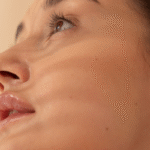
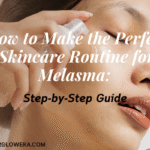
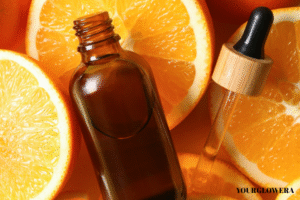
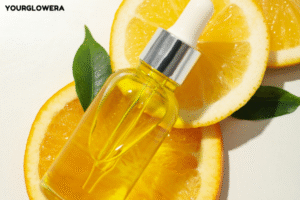
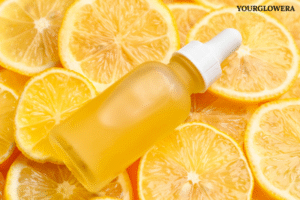
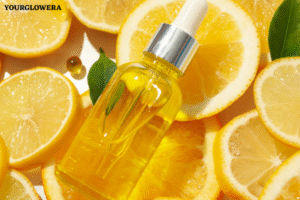

Leave a reply